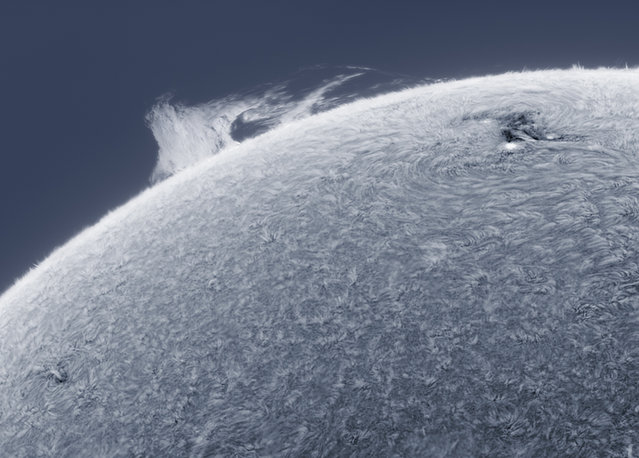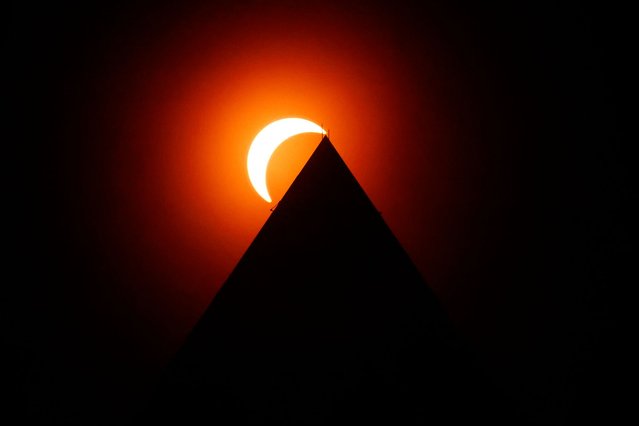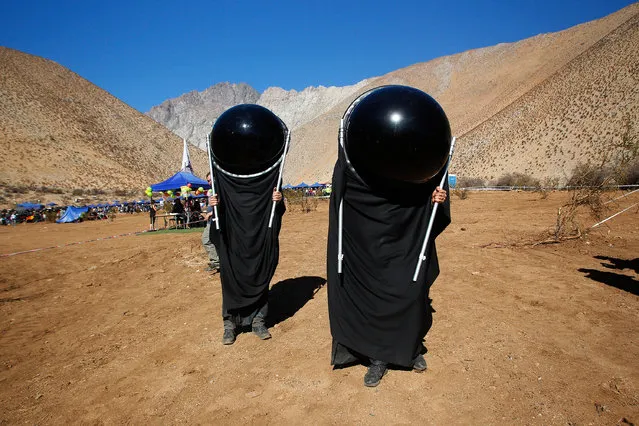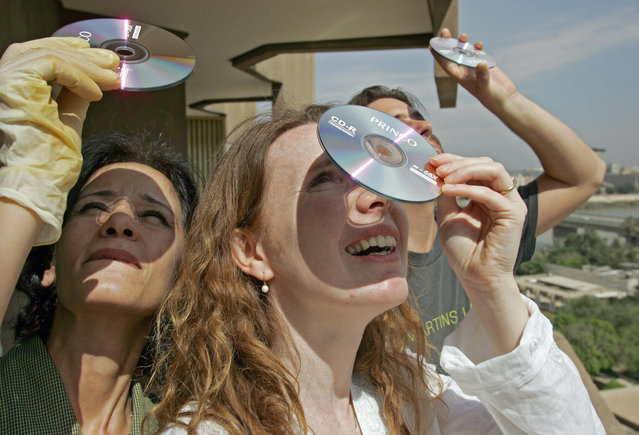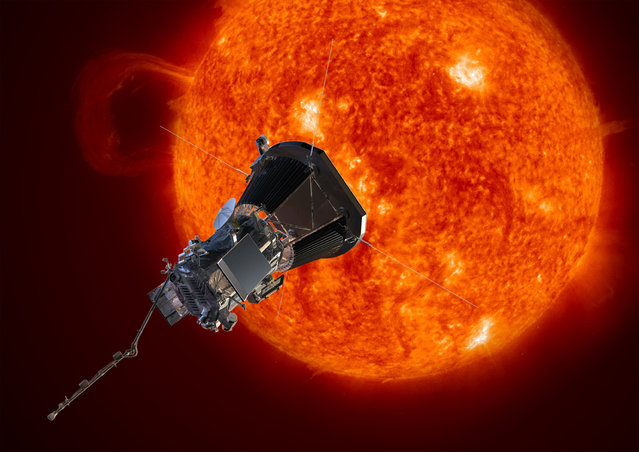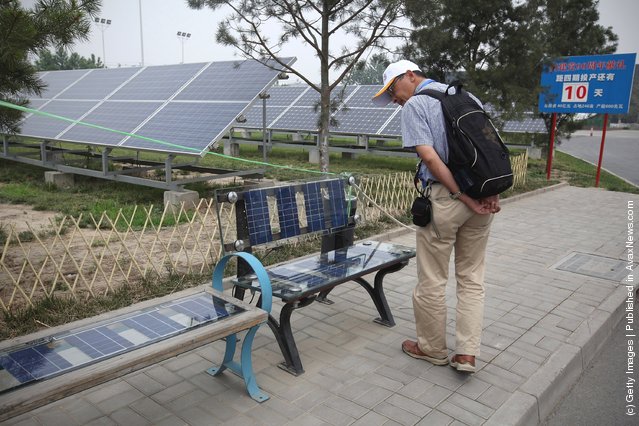
Balinese tries to see partial phase of hybrid solar eclipse using welding glass at Sanur Beach in Denpasar, Bali, Indonesia on April 20, 2023. Hybrid solar eclipse is when annular and total eclipse occurs on its path the across eastern Indonesian islands. However, in central and western part of Indonesia only partial eclipse phase can be observed. (Photo by Johannes P. Christo/Anadolu Agency via Getty Images)
06 May 2023 03:17:00,post received
0 comments


